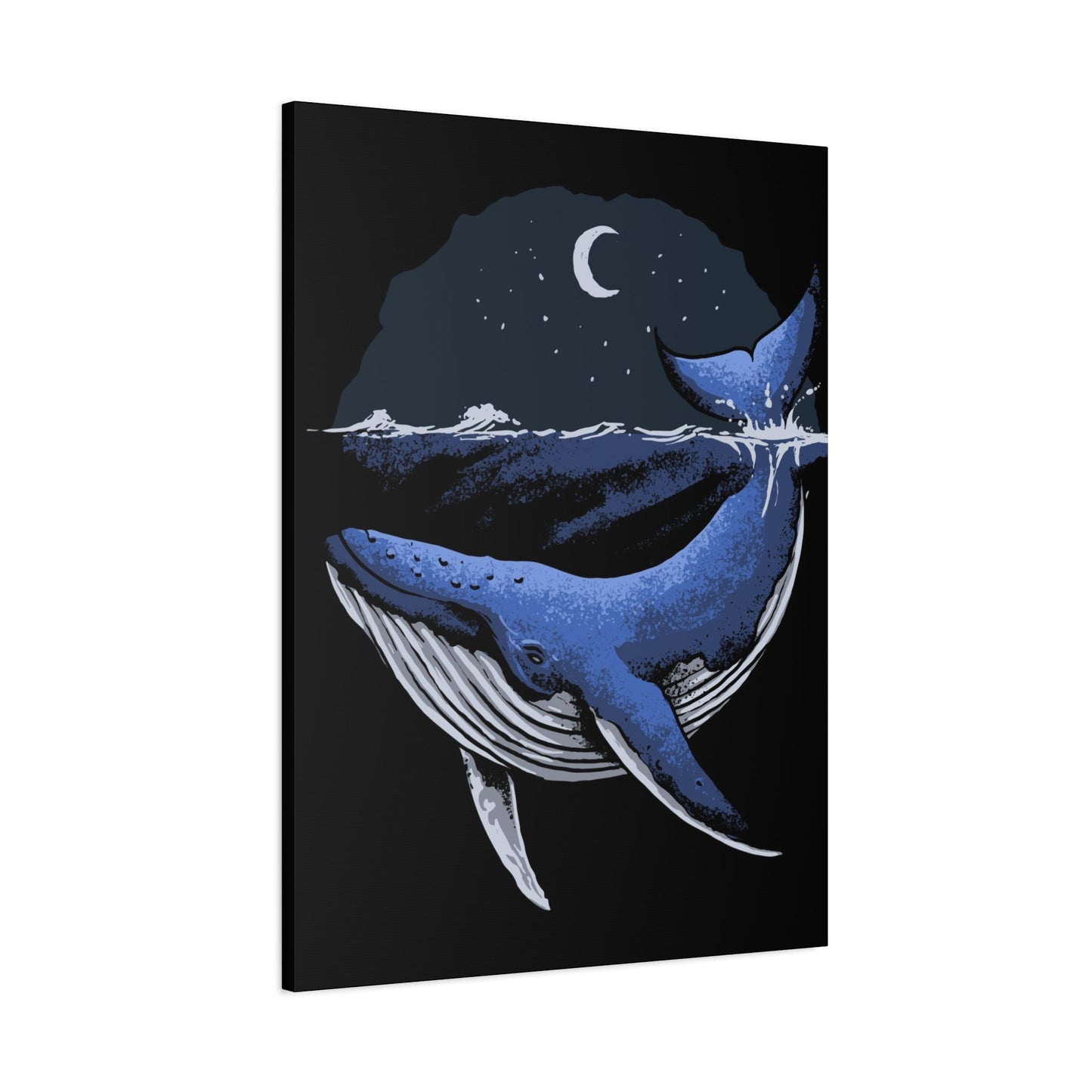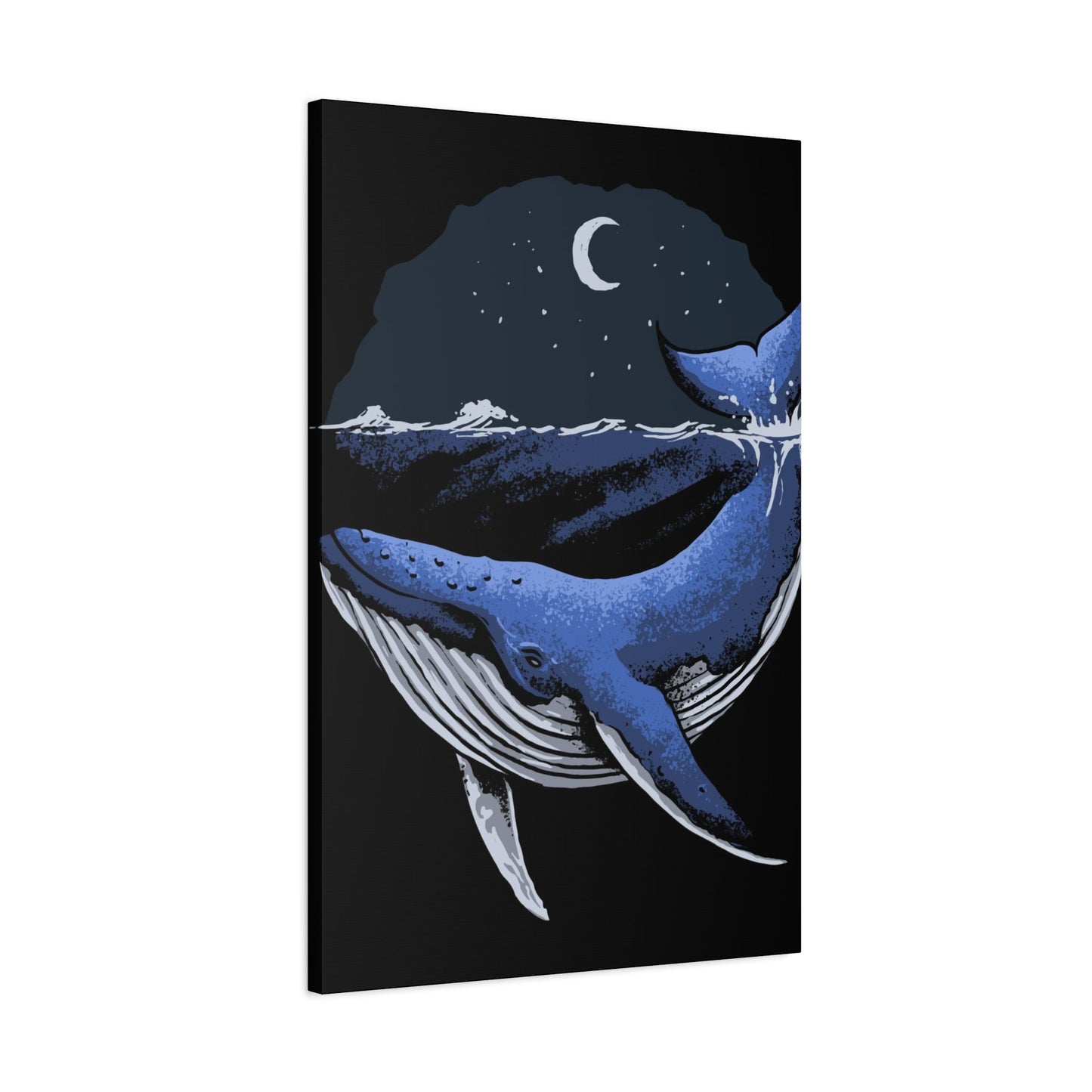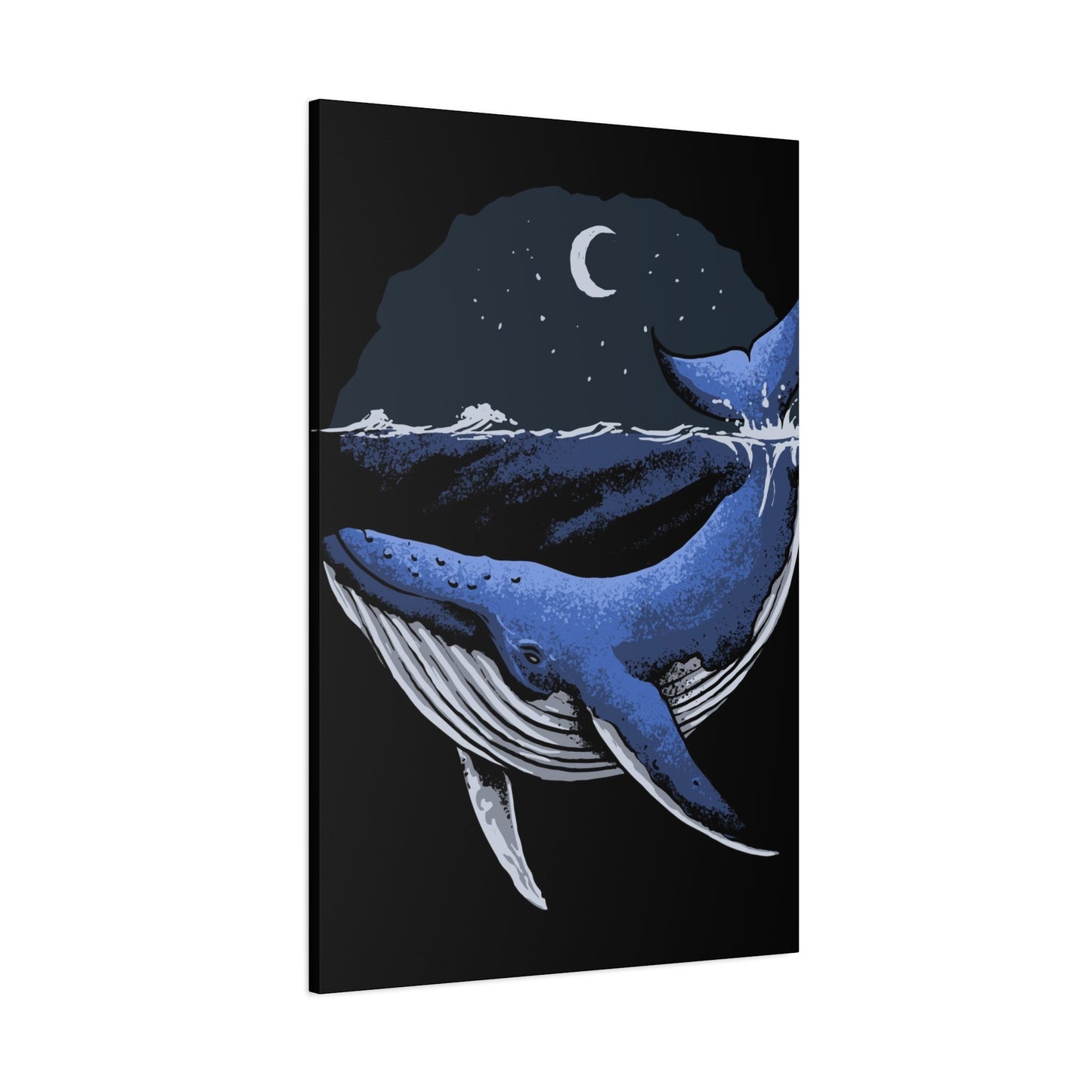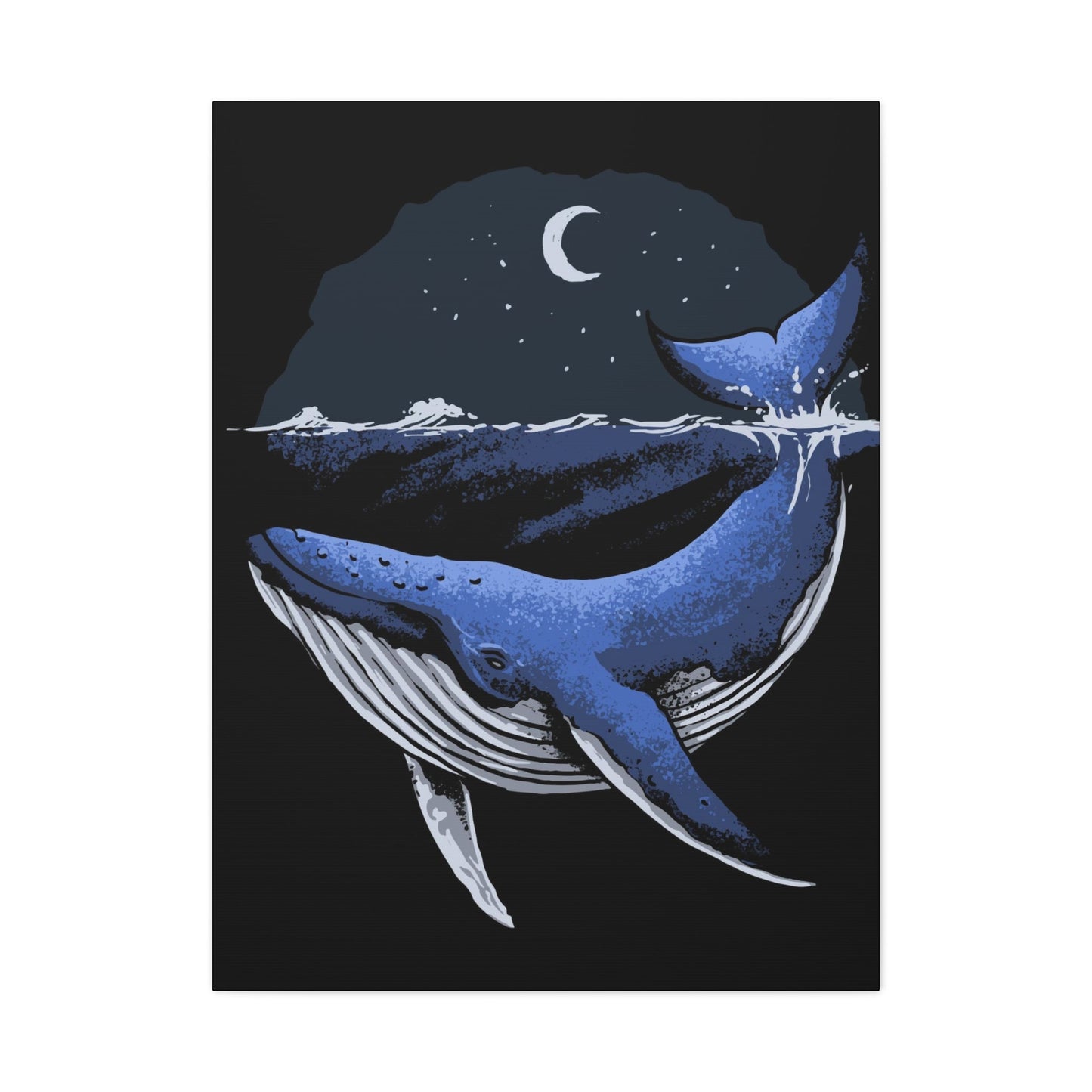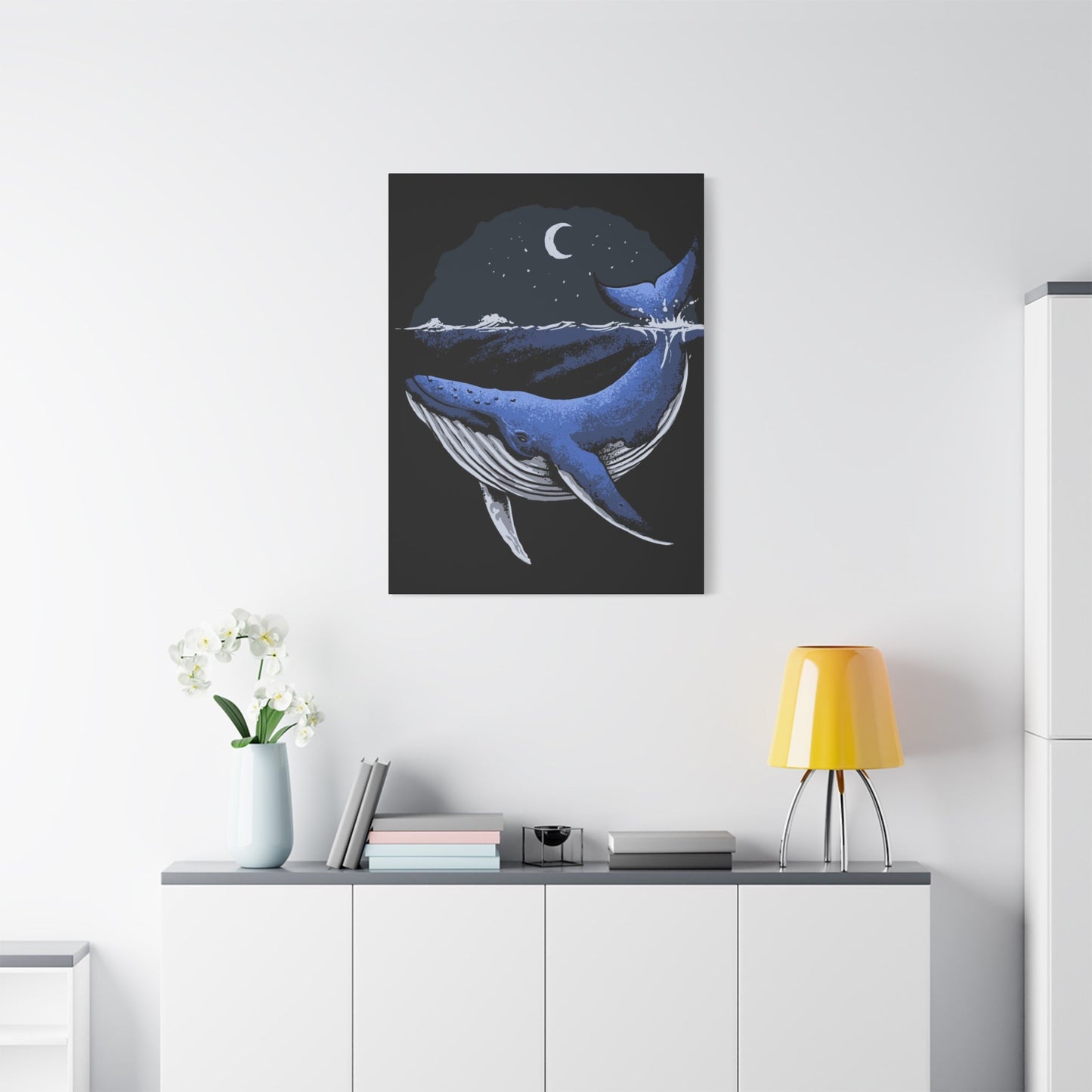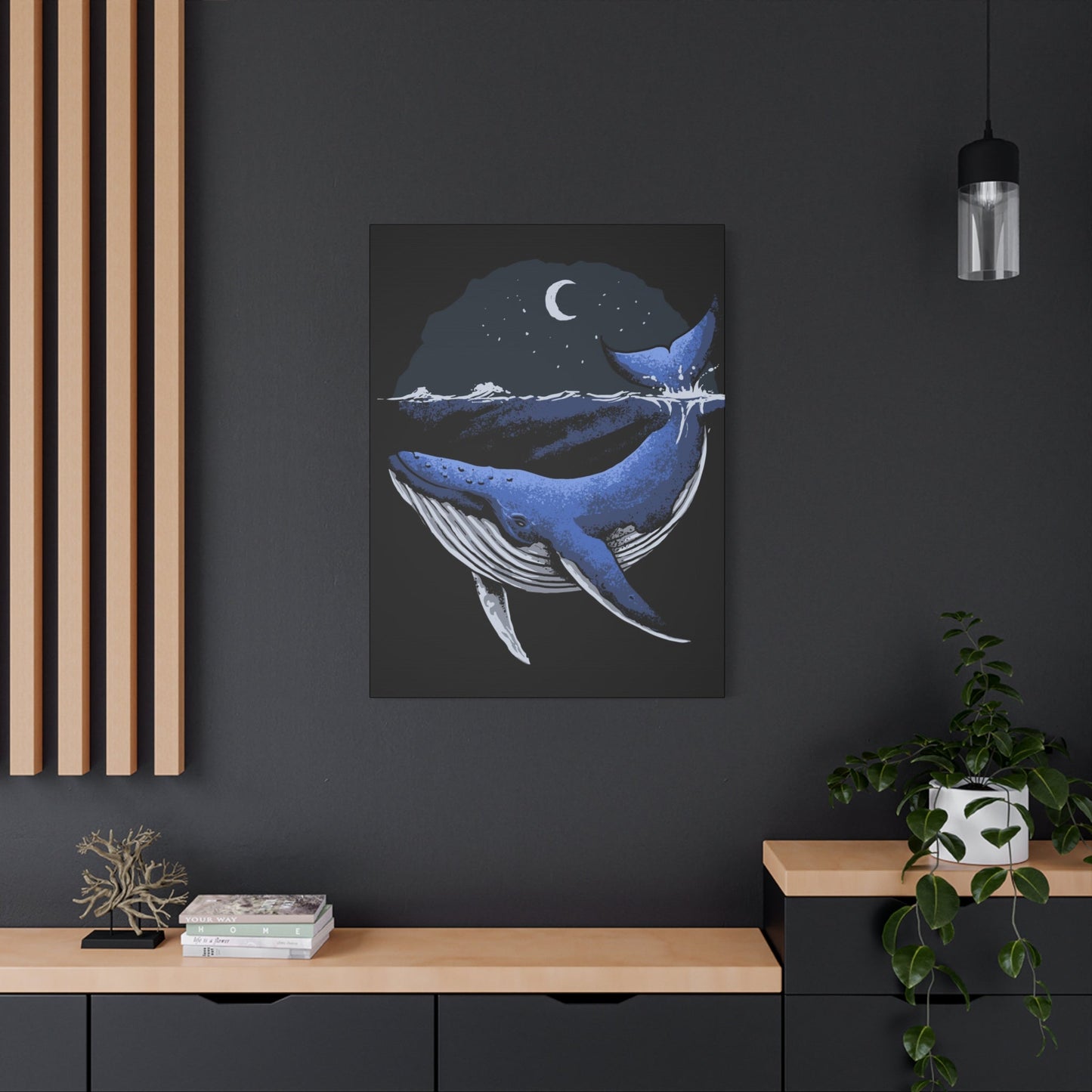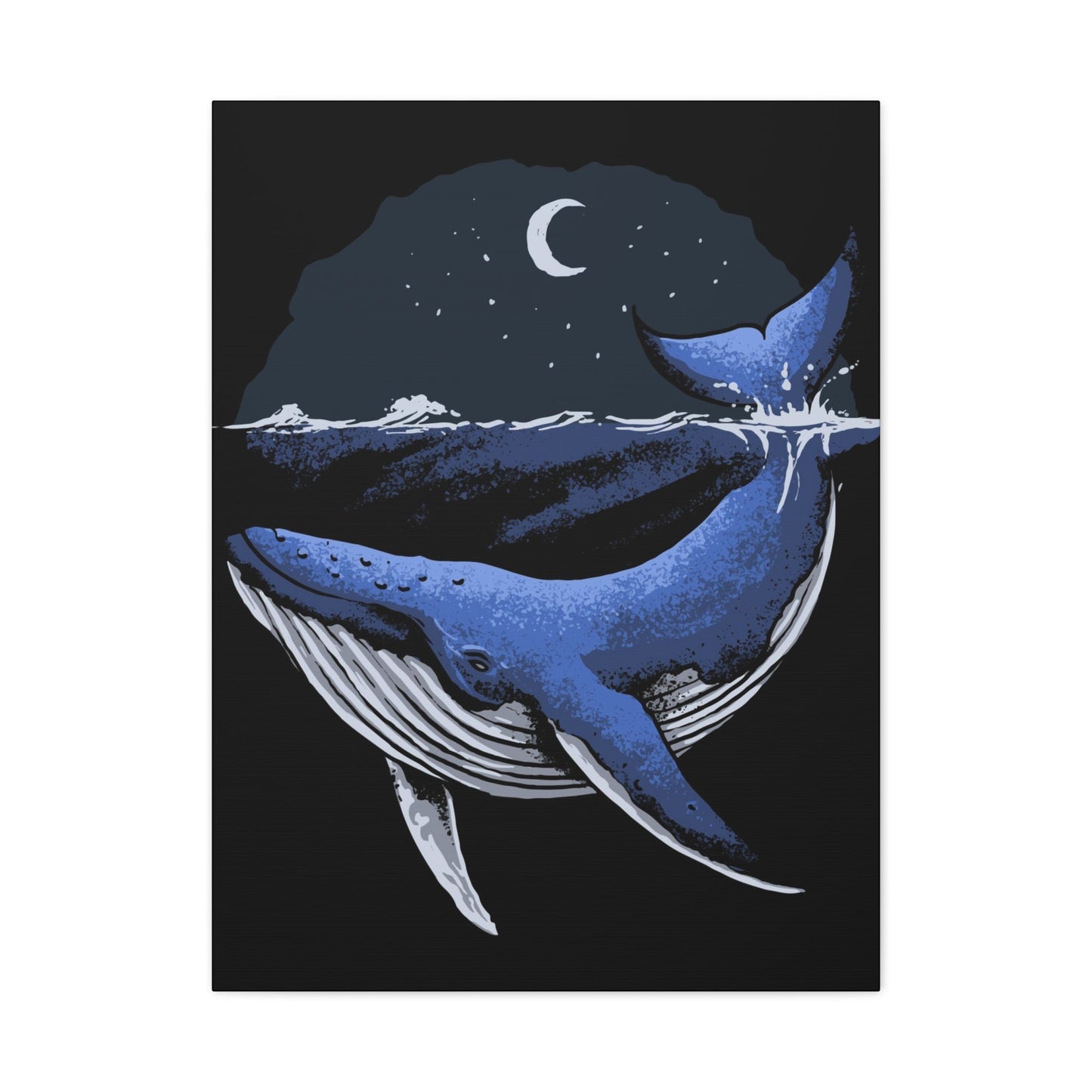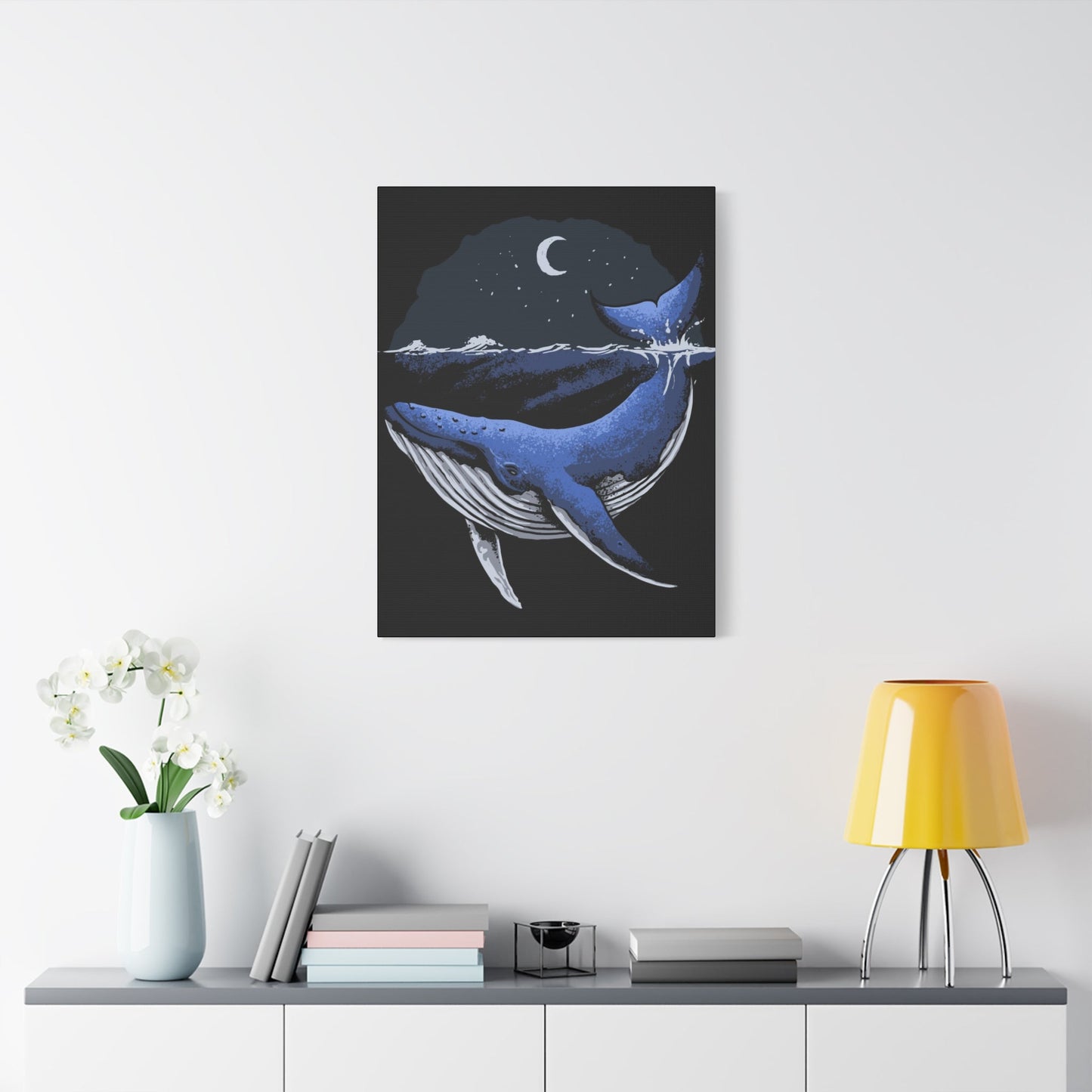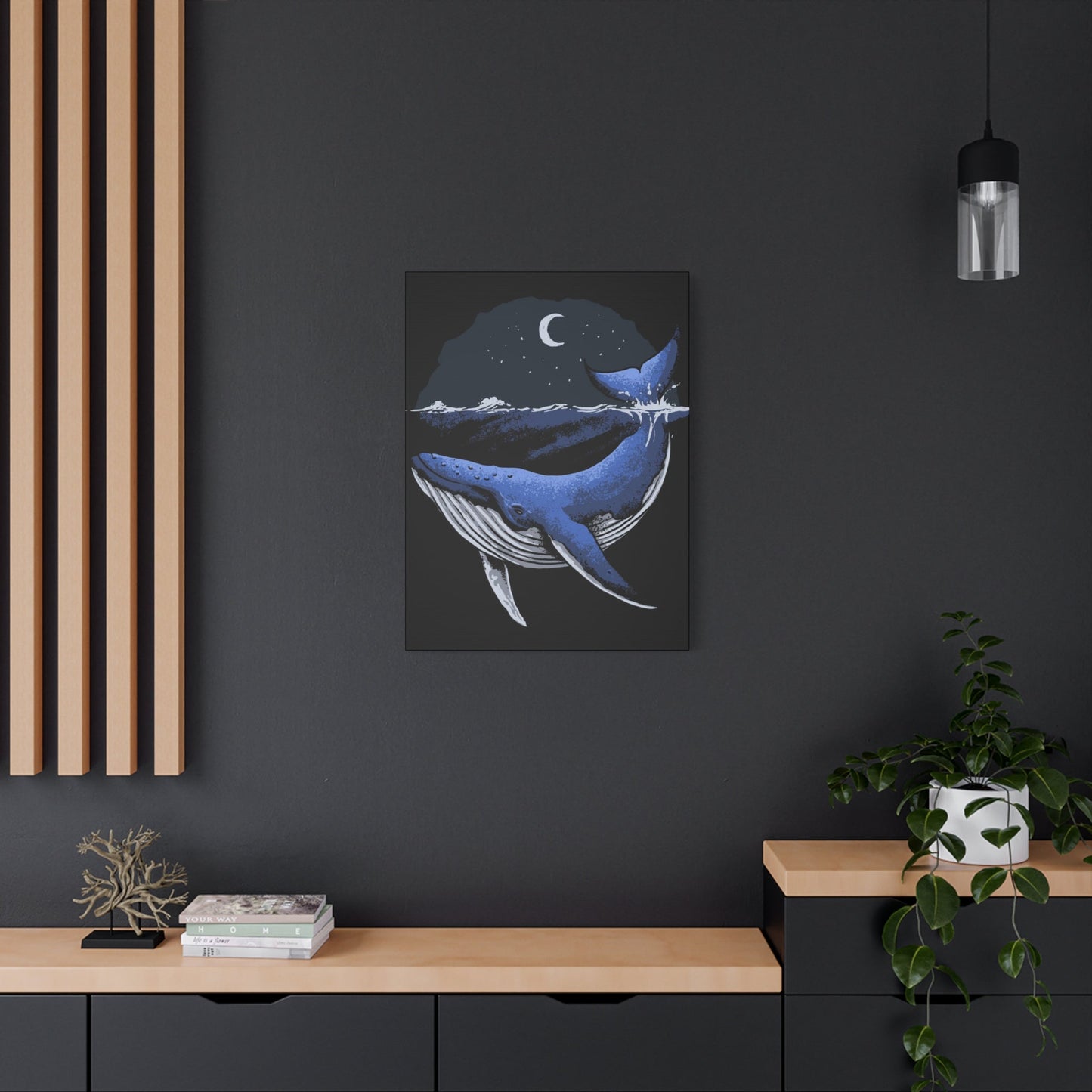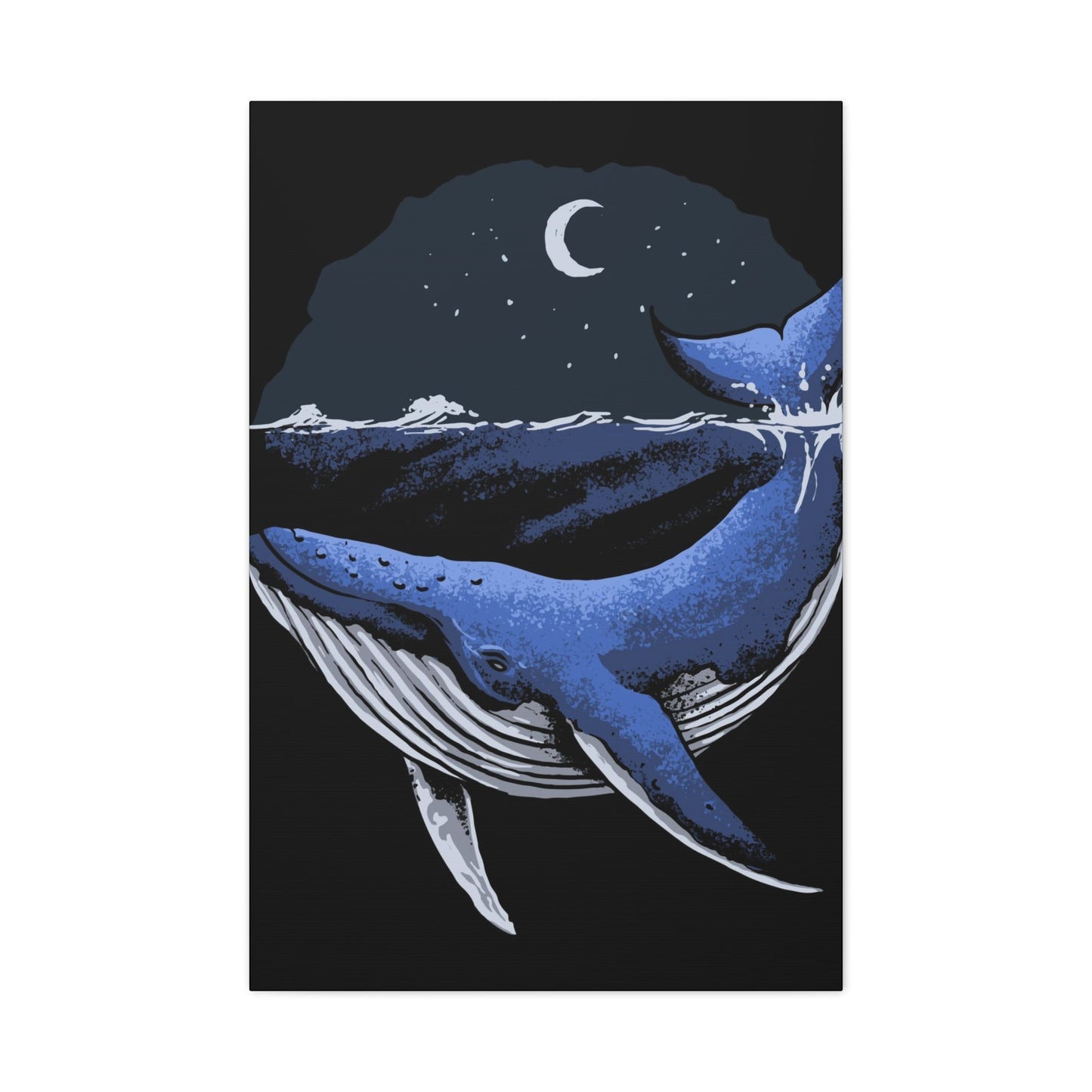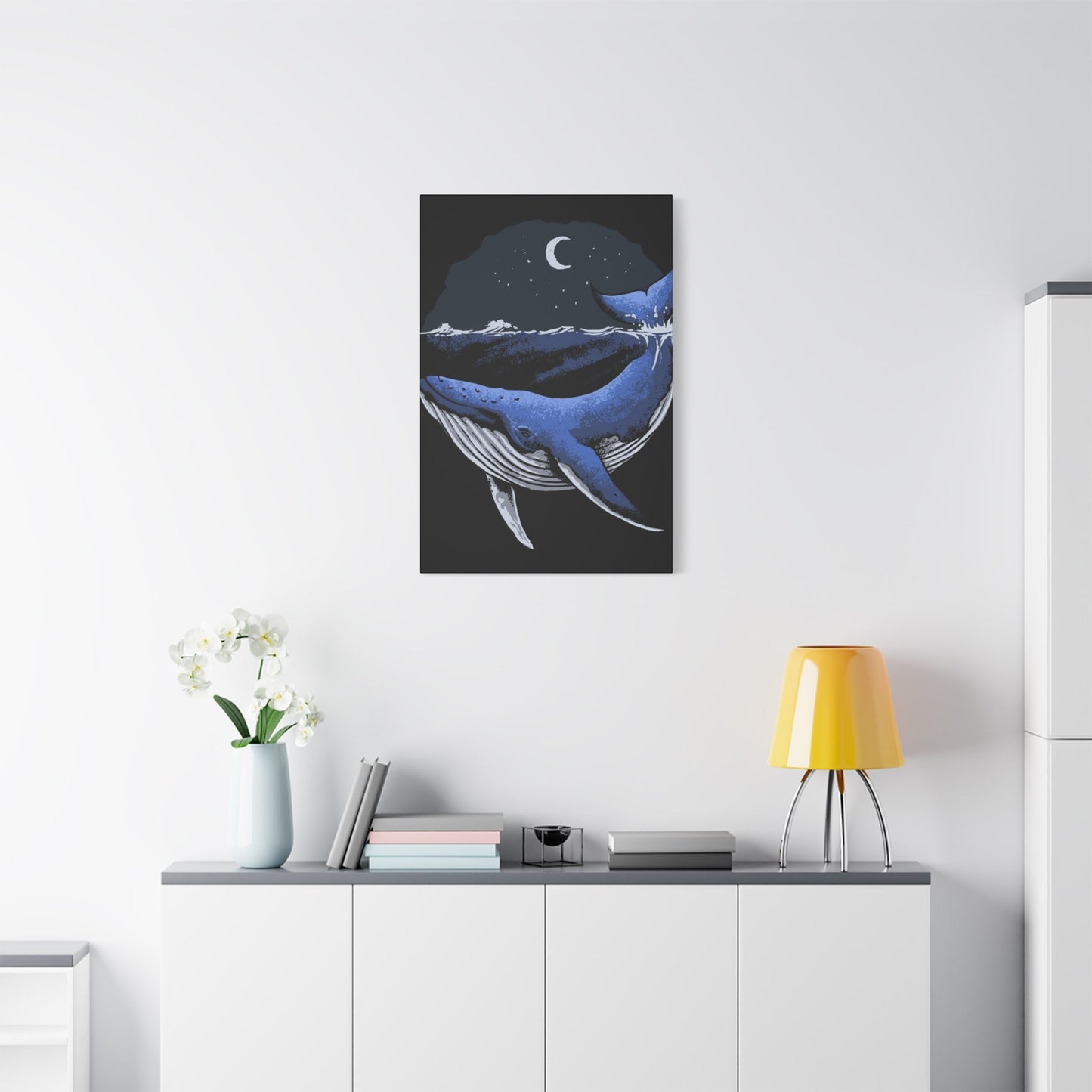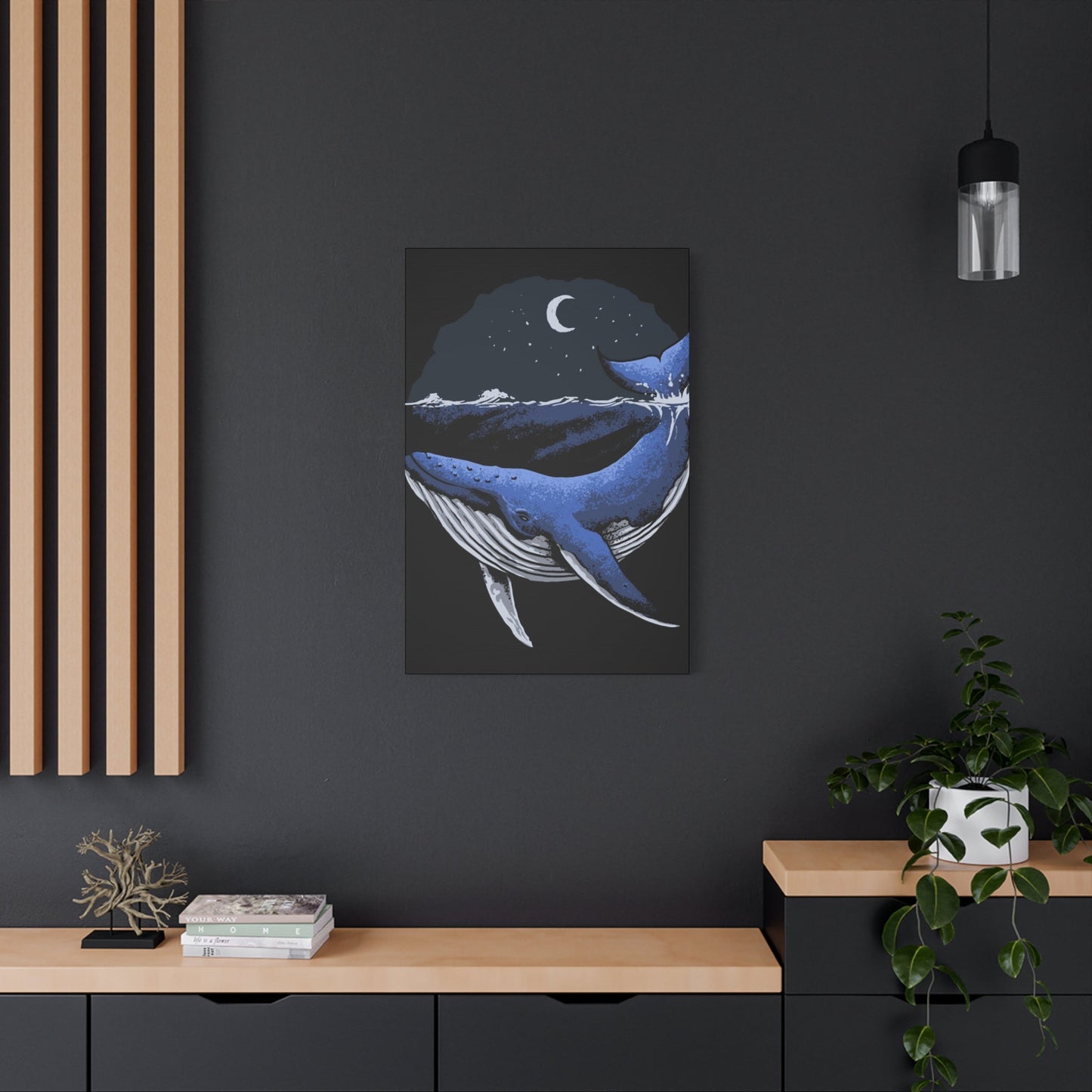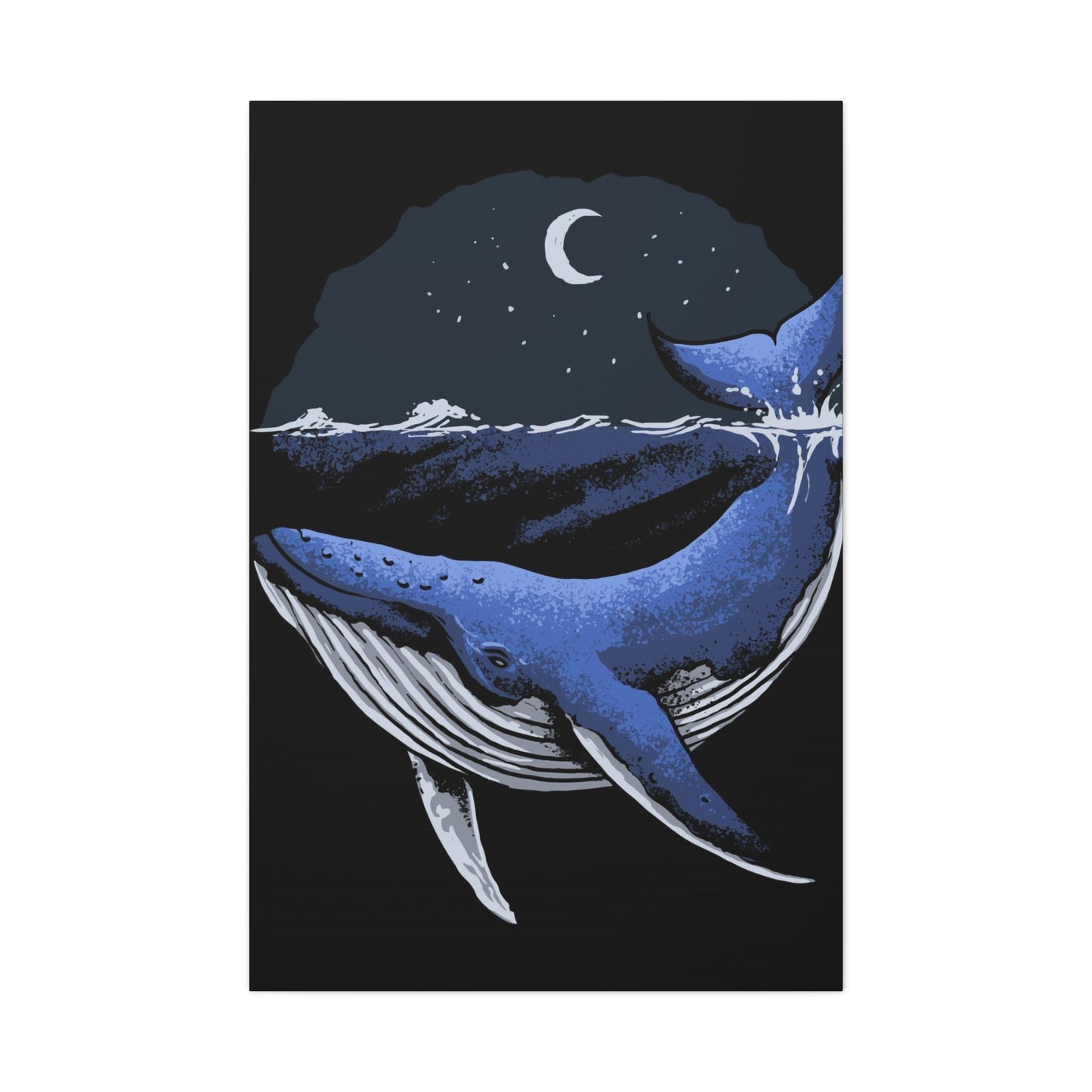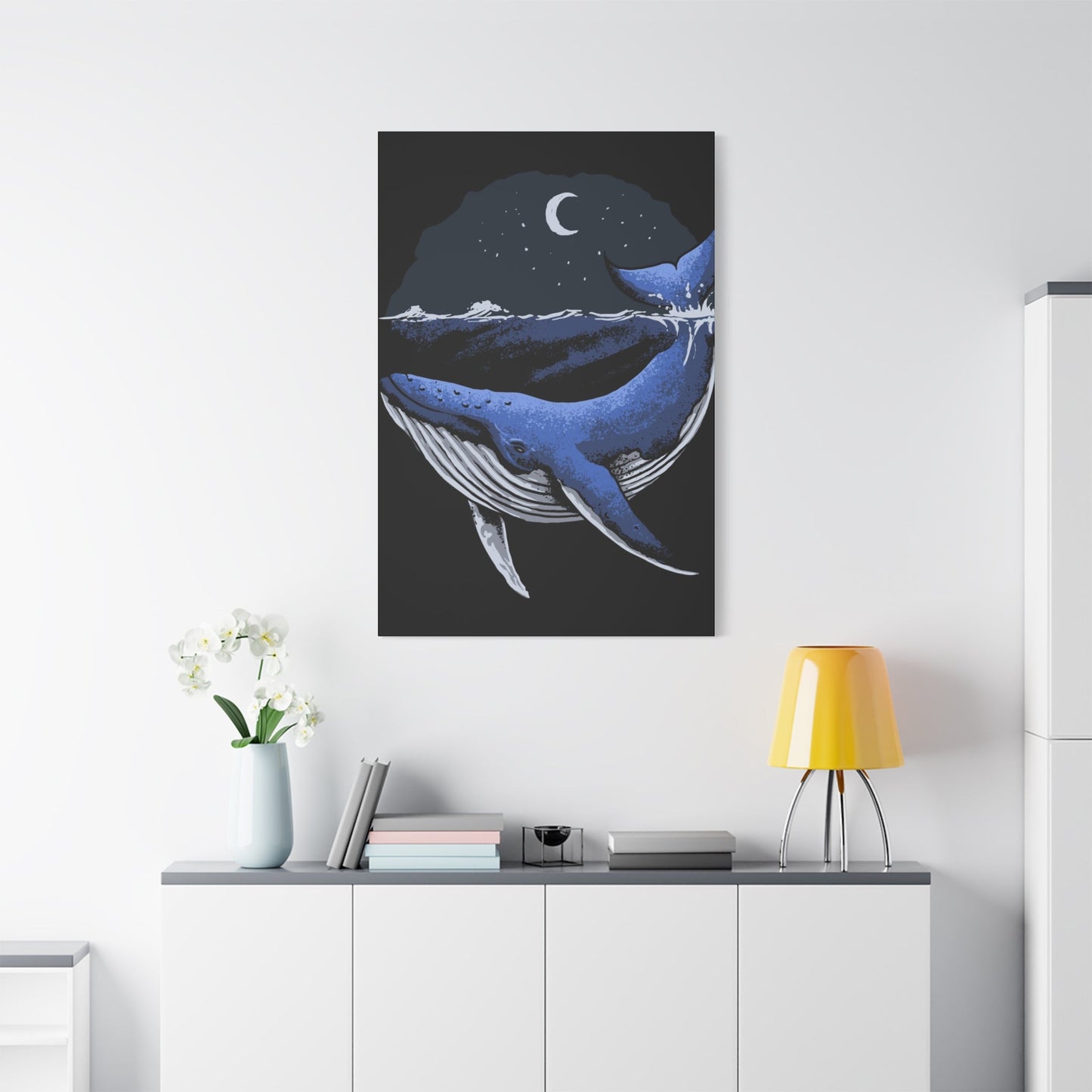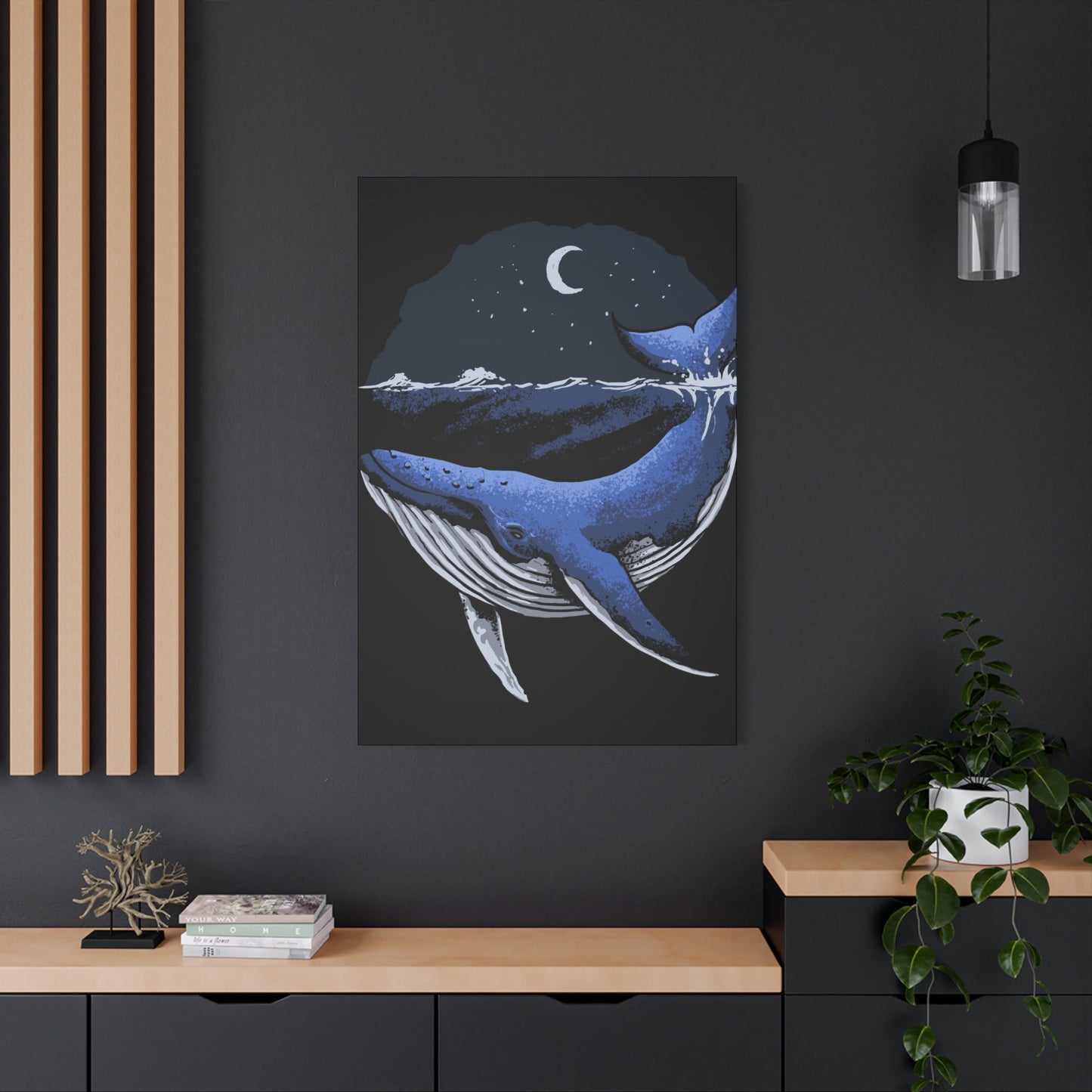Blue Whale Wall Art Collection: Marine Masterpieces for Ocean Lovers
The magnificent blue whale, Earth's largest creature, has captured human imagination for centuries. These gentle giants of the deep have inspired countless artists, designers, and ocean enthusiasts to create stunning visual representations that bring the majesty of marine life into our homes and spaces. Blue whale artwork represents more than just decoration; it symbolizes the profound connection between humanity and the vast oceans that cover our planet.
From ancient maritime cultures to contemporary digital artists, the blue whale has served as a powerful muse for creative expression. The creature's immense size, graceful movements, and mysterious nature make it an ideal subject for various artistic interpretations. Whether rendered in realistic detail or abstract forms, blue whale art captures something essential about our relationship with the natural world and the awe-inspiring creatures that inhabit it.
Modern blue whale artwork encompasses a wide range of styles, mediums, and approaches. Artists employ everything from traditional watercolors and oils to digital illustrations and sculptural forms to capture the essence of these marine mammals. The popularity of blue whale art has grown significantly in recent years, driven by increased environmental awareness and a renewed appreciation for ocean conservation.
The appeal of blue whale artwork extends beyond mere aesthetic value. These pieces often serve as conversation starters about marine biology, environmental protection, and the delicate balance of oceanic ecosystems. When displayed in homes, offices, or public spaces, blue whale art creates an immediate connection to the natural world and reminds viewers of the incredible diversity of life on our planet.
Majestic Blue Whale Art
Majestic blue whale art captures the awe-inspiring presence of these enormous marine mammals through grand, sweeping compositions that emphasize their incredible scale and grace. Artists working in this style often focus on creating pieces that convey the sheer magnitude of blue whales while maintaining the elegant beauty that defines these creatures. The majestic approach to blue whale art typically features dramatic perspectives, rich color palettes, and compositions that make viewers feel as though they are witnessing these giants in their natural habitat.
One of the most compelling aspects of majestic blue whale art is how artists handle the challenge of scale. Blue whales can reach lengths of up to 100 feet, making them larger than most buildings. Artists must find creative ways to convey this immense size within the confines of a canvas or print. Some achieve this through comparison with smaller elements like schools of fish, diving humans, or boats, while others use perspective and composition to suggest vastness that extends beyond the frame.
The color choices in majestic blue whale art are crucial to creating the desired impact. Many artists employ deep ocean blues, ranging from navy to cerulean, often contrasted with lighter blues and whites to suggest the play of light through water. Some artists incorporate sunset or sunrise palettes, showing blue whales breaching at golden hour, creating dramatic silhouettes against vibrant skies. These color choices not only enhance the visual impact but also evoke specific moods and emotions associated with ocean environments.
Lighting plays a particularly important role in majestic blue whale art. The way sunlight filters through ocean water creates unique opportunities for artists to experiment with illumination effects. Some pieces show whales ascending toward bright surface light, creating dramatic backlighting effects. Others feature whales in deeper waters where filtered light creates mysterious, ethereal atmospheres. These lighting choices contribute significantly to the majestic quality of the artwork.
Texture and movement are additional elements that artists use to enhance the majestic quality of blue whale art. The smooth, streamlined bodies of blue whales contrast beautifully with the turbulent movement of water around them. Artists often emphasize this contrast through their brushwork or digital techniques, creating dynamic compositions that suggest both power and grace. Water droplets cascading from a breaching whale, the wake left behind by a swimming whale, and the gentle undulation of a whale's body through water all contribute to the sense of majesty.
Many majestic blue whale art pieces also incorporate elements of the broader marine ecosystem. Krill swarms, which blue whales feed on, might appear as glittering clouds in the water. Seabirds, other whale species, or marine life like dolphins might be included to provide scale and context. These additional elements help create more complete oceanic scenes that celebrate not just the blue whale but the entire marine environment.
The emotional impact of majestic blue whale art cannot be overstated. These pieces often evoke feelings of wonder, respect, and sometimes a humbling recognition of humanity's small place in the natural world. When displayed prominently, majestic blue whale art becomes a focal point that draws viewers in and encourages contemplation about ocean conservation, marine biology, and our relationship with these incredible creatures.
Calm Blue Whale Wall Decor
Calm blue whale wall decor represents a more serene and peaceful approach to marine-themed artwork, focusing on the tranquil aspects of blue whale behavior and their role as gentle giants of the ocean. This style of decoration emphasizes the meditative qualities of observing these magnificent creatures in their natural state of peaceful existence. The calm aesthetic creates soothing environments that promote relaxation and contemplation, making these pieces ideal for bedrooms, meditation spaces, and areas where peace and tranquility are desired.
The artistic approach to calm blue whale wall decor often features muted color palettes, soft lines, and compositions that suggest stillness and serenity. Rather than dramatic action or movement, these pieces typically show blue whales in restful poses, floating gracefully through calm waters or resting near the ocean surface. The overall effect creates a sense of harmony between the whale and its environment, reflecting the peaceful coexistence that characterizes much of marine life.
Color selection plays a crucial role in achieving the calm aesthetic in blue whale wall decor. Artists and designers often choose soft blues, gentle grays, and muted whites that evoke the feeling of peaceful ocean waters. Pastel tones might be incorporated to enhance the soothing quality, while deeper blues are used sparingly to add depth without creating drama. The goal is to create a color harmony that promotes relaxation and mental clarity, similar to the effects of ocean meditation.
The composition of calm blue whale wall decor tends toward simplicity and balance. Rather than complex scenes with multiple elements, these pieces often feature single whales or small groups in uncluttered aquatic environments. Negative space is used effectively to create breathing room within the composition, allowing viewers' eyes to rest and their minds to find peace. This minimalist approach helps prevent visual overwhelm and maintains the calm atmosphere.
Lighting in calm blue whale wall decor is typically soft and diffused, avoiding harsh contrasts or dramatic shadows that might disturb the peaceful mood. Many pieces feature gentle, filtered light that suggests the quiet depths of the ocean where blue whales spend much of their time. This subdued lighting creates an almost dreamlike quality that enhances the meditative aspects of the artwork.
The textures and brushwork in calm blue whale wall decor are often smooth and flowing, avoiding sharp edges or aggressive mark-making that might disrupt the peaceful atmosphere. Digital artists working in this style frequently use soft gradients and subtle blending techniques to create seamless transitions between colors and forms. Traditional artists might employ watercolor techniques that allow colors to flow naturally into one another, creating organic, peaceful effects.
Calm blue whale wall decor often incorporates elements that enhance the tranquil mood without adding complexity. Gentle water ripples, soft cloud formations, or distant horizon lines might be included to create context while maintaining the peaceful aesthetic. Some pieces feature blue whales with their young, emphasizing the nurturing, family-oriented aspects of whale behavior that many people find comforting and heartwarming.
The psychological benefits of calm blue whale wall decor are significant. Blue is scientifically recognized as a color that promotes relaxation and reduces stress. When combined with the imagery of these gentle marine giants, the effect can be particularly powerful for creating peaceful environments. Many people find that contemplating images of whales helps them connect with feelings of vastness, freedom, and natural harmony.
Installation considerations for calm blue whale wall decor are important for maintaining the desired peaceful atmosphere. These pieces work best in spaces with natural light where the subtle color variations can be appreciated. They complement minimalist and contemporary decor styles but can also work well in traditional settings when the color palette is coordinated with existing elements.
Ocean Giant: Blue Whale Prints
Ocean giant blue whale prints celebrate the incredible size and presence of these marine mammals through artwork specifically designed for reproduction and wide distribution. These prints make the majesty of blue whales accessible to a broader audience while maintaining high artistic quality and visual impact. The focus on blue whales as ocean giants emphasizes their role as the largest animals ever known to have lived on Earth, creating artwork that captures both their physical magnitude and their significance in marine ecosystems.
The design philosophy behind ocean giant blue whale prints often centers on creating maximum visual impact through bold compositions and striking imagery. Artists working on pieces intended for print reproduction must consider how their work will translate across different sizes, papers, and printing methods while maintaining the sense of grandeur that defines the ocean giant concept. This requires careful attention to contrast, detail levels, and color choices that will reproduce well across various printing technologies.
Scale representation is particularly crucial in ocean giant blue whale prints. Artists employ various techniques to convey the enormous size of blue whales within the constraints of standard print dimensions. Some use forced perspective, showing whales from dramatic angles that emphasize their length and bulk. Others include scale references like ships, divers, or other marine life to help viewers grasp the true magnitude of these creatures. The challenge lies in making viewers feel the overwhelming presence of a 100-foot animal within a much smaller printed format.
Color management becomes especially important in ocean giant blue whale prints since these pieces must maintain their visual impact across different printing conditions and viewing environments. Artists often work with color palettes that translate well to various printing processes, including offset printing, digital printing, and home printing systems. Deep ocean blues, contrasting whites, and carefully managed gradients help ensure that the prints maintain their intended visual power regardless of how they are reproduced.
The compositional strategies used in ocean giant blue whale prints often emphasize the overwhelming presence of these creatures. Full-body profiles showing the complete length of a blue whale are popular, as are dramatic close-ups that focus on specific anatomical features like the massive head or the distinctive pleated throat. Some artists create series of prints that can be displayed together to create an even larger impression of scale and grandeur.
Detail levels in ocean giant blue whale prints must be carefully balanced to work effectively at various reproduction sizes. Too much fine detail can be lost when prints are reduced, while too little detail can make larger prints appear empty or unfinished. Successful ocean giant prints typically feature bold, clear shapes and forms with selective detail work that enhances the overall composition without overwhelming it.
The market for ocean giant blue whale prints spans from affordable home decor to high-end artistic reproductions. This diversity requires artists to consider how their work will function across different price points and quality levels. Limited edition prints might feature special papers, enhanced color reproduction, or larger formats, while more accessible versions focus on maintaining visual impact at lower production costs.
Educational elements are often incorporated into ocean giant blue whale prints, providing viewers with information about whale biology, behavior, or conservation status. Some prints include size comparisons, anatomical details, or environmental context that helps viewers understand the significance of these ocean giants beyond their impressive physical presence. This educational component adds value and depth to the artistic experience.
The framing and presentation options for ocean giant blue whale prints are diverse, ranging from simple matting that emphasizes the artwork to elaborate framing systems that enhance the sense of grandeur. Large-format prints work particularly well as statement pieces in living rooms, offices, or public spaces where their impressive scale can be fully appreciated. Smaller prints can be grouped together to create gallery walls or used as part of larger decorative schemes.
Digital distribution has opened new possibilities for ocean giant blue whale prints, allowing artists to offer instant downloads, custom sizing options, and specialty printing recommendations. This has made high-quality blue whale artwork more accessible while also enabling artists to reach global audiences interested in marine-themed decor.
Blue Whale Silhouette Art
Blue whale silhouette art represents one of the most powerful and versatile approaches to depicting these marine giants, using the distinctive outline and form of blue whales to create striking visual compositions. The silhouette technique strips away surface details to focus on the essential shape and proportions that make blue whales instantly recognizable, creating artwork that is both minimalist and deeply evocative. This artistic approach allows for creative interpretations that range from stark, graphic designs to more subtle, atmospheric pieces.
The power of blue whale silhouette art lies in the immediate recognition of the whale's distinctive form. The streamlined body, massive head, small dorsal fin, and long pectoral fins create a profile that is unmistakably that of a blue whale. Artists can manipulate this familiar form to create various moods and effects while maintaining the essential character that makes the subject identifiable. This recognition factor makes silhouette art particularly effective for logos, branding, and decorative applications where quick visual communication is important.
Color plays a crucial role in blue whale silhouette art, though in ways different from more detailed representations. The whale itself might appear as a solid black shape against a colored background, or the reverse, with a colored whale against a neutral background. Some artists create layered compositions where multiple silhouettes in different colors create depth and visual interest. Gradient effects within silhouettes can suggest volume and dimension while maintaining the simplified aesthetic.
Background treatments in blue whale silhouette art offer numerous creative possibilities. Ocean scenes with waves, bubbles, and other marine elements can provide context and movement. Sunset and sunrise skies create dramatic backdrops that emphasize the whale's profile. Abstract backgrounds allow the focus to remain entirely on the whale's form. Some artists create complex backgrounds with the whale silhouette serving as a window or frame for other imagery.
The versatility of blue whale silhouette art makes it suitable for a wide range of applications beyond traditional wall art. These designs work excellently for textile patterns, wallpaper designs, vehicle graphics, and architectural applications. The simplified nature of silhouettes makes them ideal for reproduction at various scales without loss of impact or clarity. This scalability has made blue whale silhouettes popular in both large-scale environmental graphics and small decorative items.
Compositional approaches to blue whale silhouette art vary widely depending on the intended effect. Single whale silhouettes can create powerful, minimalist statements that emphasize the creature's impressive size and grace. Multiple silhouettes might suggest whale pods or show different swimming positions and behaviors. Some artists create narrative compositions using silhouettes to tell stories about whale migration, feeding, or social interactions.
The emotional resonance of blue whale silhouette art often comes from its ability to suggest more than it explicitly shows. The simplified form allows viewers to project their own experiences and feelings onto the image. This psychological aspect makes silhouette art particularly effective for creating contemplative or inspirational pieces that encourage personal reflection about nature, conservation, or our relationship with marine life.
Texture and surface treatment add another dimension to blue whale silhouette art. While the basic form might be simplified, the surface can incorporate various textures, patterns, or effects that add visual interest without compromising the essential silhouette. Watercolor effects, paper textures, digital noise, or other surface treatments can enhance the artistic quality while maintaining the power of the simplified form.
Lighting effects in blue whale silhouette art often focus on rim lighting, backlighting, or other dramatic illumination techniques that emphasize the outline of the whale. These lighting choices can create mood and atmosphere while highlighting the graceful curves and proportions that make the blue whale silhouette so recognizable and appealing.
The production and reproduction advantages of blue whale silhouette art make it particularly attractive for commercial applications. The simplified forms reproduce well across different printing methods and materials. They work effectively in single-color applications, reducing printing costs while maintaining visual impact. This practical aspect has contributed to the widespread use of blue whale silhouettes in everything from conservation campaigns to commercial products.
Serene Blue Whale Canvas
Serene blue whale canvas art represents a thoughtful approach to marine artwork that emphasizes tranquility, peace, and the gentle nature of these ocean giants. Canvas provides an ideal medium for creating serene blue whale art because of its texture, ability to hold various painting techniques, and the substantial presence it brings to wall displays. The combination of the calming subject matter with the traditional, tactile quality of canvas creates artwork that is both visually appealing and emotionally soothing.
The artistic techniques used in serene blue whale canvas work often emphasize soft brushwork, gentle color transitions, and compositions that promote relaxation and contemplation. Artists might use techniques like wet-on-wet painting to create flowing, organic forms that suggest the fluid movement of whales through water. Layering techniques can build depth and atmosphere while maintaining the peaceful quality that defines serene artwork. The canvas texture itself contributes to the overall effect, with some artists choosing rough canvases that add tactile interest or smooth canvases that emphasize the flowing quality of the subject.
Color palettes for serene blue whale canvas art typically focus on cool, calming tones that evoke the peaceful depths of the ocean. Various shades of blue form the foundation, from deep navy representing ocean depths to lighter cerulean suggesting surface waters. Soft grays, gentle whites, and sometimes subtle greens add variety and depth while maintaining the serene atmosphere. Warm colors, when used, are typically muted and serve as gentle accents rather than dominant features.
The composition of serene blue whale canvas pieces often emphasizes balance and harmony rather than dramatic tension or movement. Whales might be positioned centrally in calm waters, swimming slowly through peaceful scenes, or resting near the surface in meditative poses. The use of negative space becomes important in creating breathing room within the composition, allowing viewers' eyes to rest and their minds to find peace. This compositional approach reflects the meditative qualities that many people associate with whale watching and ocean contemplation.
Brushwork and painting techniques in serene blue whale canvas art are chosen to enhance the peaceful atmosphere. Soft, flowing brushstrokes suggest the gentle movement of water and the graceful swimming motions of whales. Blending techniques create smooth transitions between colors and forms, avoiding harsh edges that might disturb the serene mood. Some artists employ impasto techniques selectively, using thicker paint application to add texture and interest while maintaining the overall peaceful quality.
The scale and sizing of serene blue whale canvas pieces are important considerations for their intended effect. Larger canvases can create immersive experiences that envelope viewers in the peaceful underwater world, while smaller pieces work well for intimate spaces where quiet contemplation is desired. Medium-sized canvases often strike the ideal balance, providing enough presence to create impact while remaining suitable for residential and office environments.
Lighting considerations for serene blue whale canvas art involve both the lighting within the artwork and the lighting used to display it. Within the painting, soft, diffused lighting effects create the gentle underwater atmosphere that characterizes serene pieces. For display, these canvases benefit from indirect lighting that doesn't create glare on the surface while allowing the subtle color variations and textures to be appreciated.
The psychological impact of serene blue whale canvas art makes it particularly suitable for spaces where stress reduction and relaxation are priorities. Healthcare facilities, meditation centers, bedrooms, and quiet office spaces can all benefit from the calming presence of these artworks. The combination of the peaceful blue whale imagery with the traditional, handcrafted feel of canvas creates a sense of connection to both nature and artistic tradition.
Installation and care considerations for serene blue whale canvas art involve protecting the artwork while ensuring it can be properly appreciated. Canvas pieces should be hung at appropriate heights where the details can be viewed comfortably. The substantial nature of canvas artwork makes it suitable for prominent wall placement where it can serve as a focal point for room design.
The market for serene blue whale canvas art includes both original paintings and high-quality canvas prints that reproduce the texture and appearance of original artwork. Canvas prints have made this type of art more accessible while maintaining much of the visual and tactile appeal of original paintings. The durability of canvas also makes it suitable for various environmental conditions, contributing to its popularity for both residential and commercial spaces.
Marine Beauty: Blue Whale Art
Marine beauty blue whale art celebrates the aesthetic magnificence of blue whales while highlighting their role as embodiments of oceanic splendor and natural elegance. This artistic approach focuses on the inherent beauty of these marine mammals, emphasizing their graceful forms, stunning proportions, and the poetic quality of their existence in the vast ocean environment. The concept of marine beauty encompasses not only the visual appeal of blue whales themselves but also their symbolic representation of the ocean's majesty and mystery.
The artistic interpretation of marine beauty in blue whale art often involves careful attention to the aesthetic principles that make these creatures so visually compelling. The streamlined, torpedo-shaped body of a blue whale represents millions of years of evolutionary refinement, creating a form that is both functional and beautiful. Artists working in this style pay careful attention to these proportions, often using mathematical principles like the golden ratio to enhance the visual harmony of their compositions.
Color treatment in marine beauty blue whale art explores the full spectrum of blues and related hues found in oceanic environments. From the deep indigo of ocean trenches to the brilliant turquoise of tropical shallows, artists use color to create visual richness that reflects the diverse beauty of marine environments. The natural coloration of blue whales themselves, with their blue-gray skin marked by lighter patches and sometimes touched with hints of yellow from algae, provides a sophisticated color palette that artists can explore and interpret.
The interaction between light and water creates some of the most beautiful effects in marine environments, and artists creating marine beauty blue whale art often focus intensively on these phenomena. Caustic patterns created by sunlight filtering through moving water, the ethereal glow of bioluminescent organisms, and the dramatic contrast between bright surface waters and mysterious depths all contribute to the marine beauty aesthetic. These lighting effects can transform simple whale forms into luminous, almost spiritual presences.
Composition in marine beauty blue whale art often emphasizes the elegant proportions and graceful movements that characterize these animals. The way a blue whale's massive body moves through water with surprising grace provides endless inspiration for artists. Curved lines suggesting fluid motion, the interplay between the whale's form and the water around it, and the sense of effortless power all contribute to compositions that celebrate marine beauty.
Textural elements play an important role in conveying marine beauty in blue whale art. The smooth skin of whales contrasts beautifully with the various textures of water, from glass-calm surfaces to turbulent seas. Artists might emphasize these contrasts through their choice of techniques, using smooth brushwork for whale forms and more varied approaches for water effects. The goal is to create tactile variety that enhances the overall visual richness of the piece.
The environmental context surrounding blue whales offers additional opportunities to explore marine beauty. Kelp forests, coral reefs, open ocean vistas, and the various creatures that share whale habitats all contribute to the overall aesthetic experience. Some artists create comprehensive marine scenes that showcase the interconnected beauty of oceanic ecosystems, with blue whales serving as magnificent centerpieces within larger environmental compositions.
Seasonal and temporal variations in marine beauty provide rich subject matter for blue whale artists. The different qualities of light at various times of day, seasonal changes in ocean conditions, and the way whales appear in different weather conditions all offer opportunities to explore various aspects of marine beauty. Some artists create series that explore these variations, showing how the same subject can appear dramatically different under various conditions.
The emotional resonance of marine beauty blue whale art often connects with viewers' deep-seated fascination with the ocean and its inhabitants. There is something inherently moving about the combination of immense size and gentle grace that characterizes blue whales. This emotional connection enhances the aesthetic impact of the artwork, creating pieces that are not only beautiful to look at but also meaningful on a deeper level.
Conservation themes often emerge naturally in marine beauty blue whale art, as the artwork itself serves as a celebration of these magnificent creatures and their oceanic environment. By highlighting the beauty of blue whales and their habitat, artists can create powerful statements about the importance of ocean conservation without resorting to heavy-handed messaging. The beauty itself becomes the message, encouraging viewers to value and protect these remarkable animals.
Blue Whale Ocean Wall Prints
Blue whale ocean wall prints represent a specialized category of marine artwork designed specifically for wall display applications, combining the majesty of blue whales with comprehensive oceanic environments to create impactful decorative pieces. These prints are engineered to maximize visual impact while maintaining the flexibility and affordability that make them accessible to a wide range of consumers. The integration of blue whales with broader ocean scenes creates artwork that tells more complete environmental stories while showcasing these magnificent marine mammals.
The design considerations for blue whale ocean wall prints must account for various display environments and viewing conditions. Unlike gallery pieces that might be viewed under controlled lighting conditions, wall prints need to work effectively in homes, offices, and commercial spaces with varying lighting situations. This requires careful attention to contrast levels, color saturation, and detail distribution to ensure that the prints remain visually compelling regardless of their placement.
Scale relationships become particularly important in blue whale ocean wall prints because these pieces often attempt to show both the whale and its oceanic environment within a single composition. Artists must balance the desire to show the whale's impressive size with the need to create cohesive compositions that work within standard print dimensions. This often involves creative use of perspective, layering, and compositional techniques that suggest vastness while maintaining visual coherence.
Color management for blue whale ocean wall prints requires consideration of how colors will reproduce across different printing technologies and paper types. The various blues that dominate oceanic scenes can be challenging to reproduce accurately, particularly the subtle gradations between different water depths and lighting conditions. Successful prints often use color palettes that are robust enough to maintain their impact even when printed on basic papers with standard printing processes.
The environmental storytelling aspect of blue whale ocean wall prints sets them apart from more focused whale portraits. These pieces often include elements like plankton clouds that whales feed on, other marine life sharing the same ecosystem, surface conditions that reflect weather patterns, and depth variations that show the three-dimensional nature of oceanic environments. This comprehensive approach creates educational value alongside aesthetic appeal.
Composition strategies for blue whale ocean wall prints often employ techniques borrowed from landscape painting and environmental art. Foreground, middle ground, and background elements create depth and visual interest while providing context for the whale subjects. Some prints use panoramic formats that emphasize the vast horizontal expanse of ocean environments, while others use vertical orientations to show the depth dimension of marine habitats.
The market segmentation for blue whale ocean wall prints includes everything from budget-friendly decorative prints to high-end artistic reproductions. This diversity requires different approaches to image preparation, paper selection, and finishing options. Mass-market prints might prioritize bold, clear imagery that reproduces well on standard papers, while premium prints can explore more subtle effects and complex color relationships.
Installation considerations for blue whale ocean wall prints include standard sizes that work well in common framing options, as well as specialty formats that create unique display opportunities. Large-format prints can serve as statement pieces, while smaller prints work well in groupings or as part of gallery wall arrangements. Some prints are designed to work together as series, creating larger compositions when displayed as groups.
The seasonal and lighting variations possible in blue whale ocean wall prints provide opportunities to create artwork suitable for different moods and preferences. Storm scenes with dramatic lighting, peaceful sunset environments, deep-sea settings with filtered light, and surface scenes with bright, clear illumination all offer different aesthetic experiences while featuring blue whale subjects.
Digital printing technologies have expanded the possibilities for blue whale ocean wall prints, allowing for custom sizing, special paper options, and printing on demand that reduces inventory costs. This technological flexibility has made it possible to offer more variety in print options while maintaining quality standards that satisfy discerning customers.
The educational market for blue whale ocean wall prints includes schools, aquariums, marine research facilities, and other institutions where accurate representation of marine environments is important. These applications often require prints that balance artistic appeal with scientific accuracy, showing whales and their environments in ways that support educational objectives while remaining visually engaging.
Whale of a Time: Blue Wall Art
Whale of a time blue wall art represents a playful and engaging approach to blue whale artwork that emphasizes the joy, wonder, and fun aspects of these magnificent marine creatures. This style of artwork often incorporates whimsical elements, creative interpretations, and design approaches that make blue whale art accessible and appealing to a broad audience, including families with children. The "whale of a time" concept suggests artwork that brings happiness and positive energy to spaces while celebrating the remarkable nature of blue whales.
The design philosophy behind whale of a time blue wall art often emphasizes approachability and charm rather than the more serious or contemplative tones found in some marine artwork. This might involve brighter color palettes, more stylized whale representations, or the inclusion of humorous elements that make the artwork feel friendly and welcoming. The goal is to create pieces that make viewers smile while still honoring the remarkable nature of blue whales.
Character-driven approaches to whale of a time blue wall art might anthropomorphize blue whales to some degree, giving them expressive faces, playful poses, or engaging in activities that create narrative interest. While maintaining respect for the animals, this approach can make blue whales more relatable and engaging, particularly for younger audiences. These character interpretations might show whales playing, singing, or interacting with their environment in ways that emphasize their intelligence and social nature.
Color treatments in whale of a time blue wall art often break away from strictly realistic ocean blues to include more vibrant and varied palettes that enhance the playful atmosphere. Bright blues, cheerful teals, sunny yellows, and other uplifting colors might be incorporated to create artwork that energizes spaces and elevates moods. These color choices can still maintain connection to marine environments while expanding the emotional range of the artwork.
Interactive and engaging elements in whale of a time blue wall art might include visual jokes, hidden details that reward closer inspection, or compositional elements that create a sense of movement and activity. Some pieces might show whales engaging in playful behaviors like breaching, tail slapping, or interacting with other marine life in ways that suggest the social and playful aspects of whale behavior.
The versatility of whale of a time blue wall art makes it suitable for a wide range of environments, from children's bedrooms and playrooms to casual living spaces and creative work environments. The positive, uplifting nature of this artwork style can help create atmosphere in spaces where creativity, learning, and positive thinking are encouraged. This makes it particularly popular in educational settings, family homes, and spaces designed to inspire and energize.
Typography and text elements sometimes play a role in whale of a time blue wall art, incorporating whale-related puns, inspirational messages, or educational information in ways that enhance rather than dominate the visual composition. These text elements might use playful fonts and creative layouts that complement the overall design while adding another layer of engagement for viewers.
Series and collection approaches to whale of a time blue wall art allow for extended storytelling and theme development across multiple pieces. A series might follow a blue whale character through different adventures, show various whale behaviors in playful interpretations, or explore different aspects of marine life with the whale as a central character. This approach creates opportunities for larger wall installations and repeated purchases by satisfied customers.
The technical execution of whale of a time blue wall art requires balancing playful creativity with quality artistic standards. Even whimsical interpretations benefit from solid drawing skills, thoughtful composition, and professional finish quality. The challenge lies in maintaining artistic integrity while embracing the fun and accessibility that defines this approach.
Market positioning for whale of a time blue wall art often focuses on gift giving, children's decor, and casual home decoration markets. The approachable nature of this artwork style makes it suitable for people who might be intimidated by more serious marine art but still want to celebrate their love of whales and ocean life. This broader appeal can help expand the market for whale-themed artwork.
Educational opportunities within whale of a time blue wall art allow for learning disguised as fun. Pieces might include accurate whale anatomy, behavior information, or conservation messages presented in engaging, non-threatening ways. This educational component adds value for parents, teachers, and others who want artwork that entertains while also providing learning opportunities.
Graceful Blue Whale Drawings
Graceful blue whale drawings represent the pure artistry of line, form, and composition applied to one of nature's most elegant creatures. Drawing, as one of the most fundamental artistic mediums, allows artists to capture the essential grace and beauty of blue whales through the careful manipulation of lines, shading, and negative space. This artistic approach emphasizes the skill and vision of the artist while celebrating the inherent elegance that defines blue whale movement and form.
The technical challenges of creating graceful blue whale drawings begin with understanding the anatomy and proportions that make these creatures so visually compelling. Blue whales possess a streamlined form that represents millions of years of evolutionary refinement, creating shapes that are both functional and beautiful. Artists must master these proportions to create drawings that feel authentic and capture the effortless power that characterizes blue whale movement through water.
Line quality plays a crucial role in conveying grace in blue whale drawings. Flowing, confident lines that suggest the smooth contours of whale bodies create a sense of movement and elegance. Varying line weights can indicate depth, volume, and emphasis while maintaining the overall sense of grace. Some artists use single, continuous lines to capture the fluid outline of a whale, while others build form through multiple overlapping strokes that suggest volume and dimension.
Shading techniques in graceful blue whale drawings must balance the need to show form and dimension with the desire to maintain the flowing, elegant quality of the subject. Gradual tonal transitions can suggest the rounded forms of whale bodies, while selective use of darker values can provide depth and contrast. The interaction between light and shadow on a whale's form can create dramatic effects while maintaining the graceful aesthetic.
Compositional approaches to graceful blue whale drawings often emphasize the flowing lines and elegant proportions that define these creatures. The placement of the whale within the drawing space, the angle of view, and the relationship between the whale and its environment all contribute to the overall sense of grace. Some drawings focus on full-body profiles that show the complete elegant form, while others concentrate on specific aspects like the graceful curve of a whale's back or the elegant taper of its tail.
The medium choices for graceful blue whale drawings can significantly impact the final aesthetic. Pencil drawings allow for subtle gradations and fine detail work that can capture delicate grace. Charcoal provides opportunities for bold contrasts and flowing lines that suggest power combined with elegance. Ink drawings, whether with traditional pens or brushes, can create striking linear compositions that emphasize the essential forms of whale anatomy.
Environmental context in graceful blue whale drawings often focuses on suggesting water and oceanic environments without overwhelming the primary subject. Simple line work might suggest water movement around the whale, while more detailed approaches could include complete underwater scenes. The key is maintaining balance between environmental context and the focus on the whale's graceful form.
The emotional resonance of graceful blue whale drawings often comes from the viewer's recognition of the skill required to capture such grace through simple lines and shading. There is something deeply satisfying about seeing complex three-dimensional forms reduced to essential two-dimensional elements while maintaining their beauty and character. This appreciation for artistic skill enhances the viewing experience beyond simple subject matter appreciation.
Educational value in graceful blue whale drawings can include accurate anatomical representation that helps viewers understand whale biology while appreciating their aesthetic qualities. Some drawings might include anatomical details, behavioral information, or scale references that provide learning opportunities alongside artistic enjoyment. This educational component can be particularly valuable in settings where art and science education intersect.
The preservation and presentation of graceful blue whale drawings require consideration of the medium's specific needs. Works on paper need protection from light, moisture, and handling damage. Proper framing with UV-protective glass and acid-free materials helps ensure that these delicate works can be enjoyed for years to come. The intimate nature of drawings often makes them suitable for closer viewing than paintings or prints, requiring thoughtful placement in display environments.
Contemporary approaches to graceful blue whale drawings might incorporate digital techniques that expand the possibilities for line work, shading, and composition while maintaining the essential drawing aesthetic. Digital tools can provide new ways to create flowing lines and subtle gradations while offering advantages in terms of reproduction and distribution that traditional drawings cannot match.
Deep Sea Blue Whale Art
Deep sea blue whale art delves into the mysterious and awe-inspiring realm of the ocean’s depths, where blue whales—Earth’s largest living creatures—spend much of their lives. This unique artistic genre seeks to capture not only the majestic scale and grace of these marine giants but also the surreal and enigmatic beauty of the deep sea itself. The interplay between light and darkness, motion and stillness, becomes central to conveying the ethereal ambiance of underwater worlds.
Artists often use rich, immersive palettes dominated by deep blues, indigos, and shadowy blacks to evoke the feeling of being submerged in the vast, uncharted waters. Blue whales are frequently portrayed as ghostly silhouettes drifting through the gloom, their immense forms illuminated only by rare shafts of light or the subtle glow of bioluminescent life. This stark contrast between the creature’s size and the empty, mysterious environment around it creates a compelling sense of isolation, power, and reverence.
Symbolically, deep sea blue whale art can reflect themes of exploration, vulnerability, and the sublime. The blue whale becomes a metaphor for resilience and mystery—an ancient being navigating the hidden expanses of a world still largely unknown to humans. Whether rendered through digital illustration, painting, or mixed media, these artworks invite viewers into a contemplative space, encouraging them to ponder both the natural wonder of marine life and humanity’s connection to the ocean's vast, unseen depths.
Final Thoughts
The Blue Whale Wall Art Collection is more than a visual celebration of marine life—it's a tribute to the majesty, mystery, and grace of the ocean’s most iconic gentle giant. For ocean lovers, these pieces are not just decorative; they are deeply symbolic expressions of our connection to the sea, representing strength, depth, and serenity.
Blue whales, the largest creatures on Earth, move through the oceans with quiet power and elegance. Their image in wall art evokes a sense of awe and calm, making them ideal subjects for artwork intended to transform living spaces into peaceful, inspiring sanctuaries. Whether rendered in bold, abstract brushstrokes or finely detailed illustrations, blue whale art resonates with anyone drawn to the sea’s vast beauty and rhythmic tranquility.
These marine masterpieces also serve as meaningful conversation pieces, inviting curiosity and reflection. They remind us of the importance of protecting our oceans and appreciating the wonders that exist beneath the surface. As part of a curated coastal interior, a statement hallway, or a quiet reading corner, blue whale art brings emotional depth and natural elegance to the space.
Incorporating pieces from a blue whale wall art collection is a thoughtful way to reflect your love for marine life while enhancing the ambiance of your home. These works of art capture the soul of the sea, inviting you to slow down, breathe deeply, and feel connected to something larger—something timeless.


















